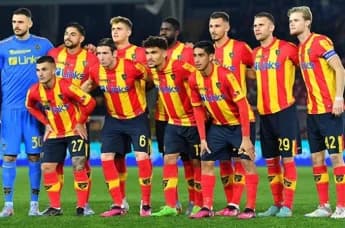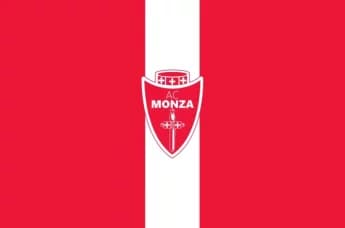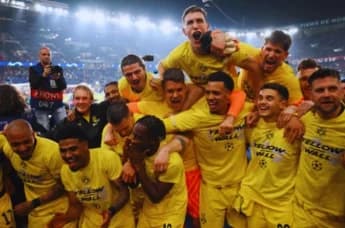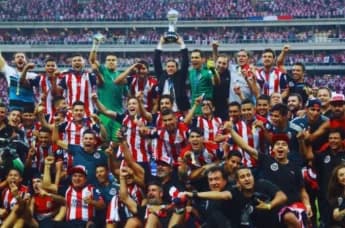Dive into the remarkable journey of SS Lazio, from its historic foundations and iconic rivalries to its future ambitions in Italian and European football.
Established on January 9, 1900, in the historic Prati neighborhood of Rome, Società Sportiva Lazio was created not just as a football club, but as a trailblazer in multi-sport activities. Originally founded to promote athletics and embody the ideals of sports as a unifying force, the inception of Lazio set the stage for one of Italy's most beloved football clubs. With a rich history spanning over a century, Lazio has become a symbol of resilience, loyalty, and fervor.
The sky-blue and white colors of Lazio, drawing inspiration from Greece’s Hellenic heritage, symbolize a deep connection to classical history that resonates within the timeless city of Rome. This blend of cultural and historical significance has positioned Lazio as not just a football representation of Rome, but as a club intricately linked to the city's identity. The Derby della Capitale, fought against AS Roma, stands as an intense rivalry that captivates fans globally, epitomizing the struggle for dominance in Rome.
Lazio's commitment to inclusivity and community involvement has allowed the club to extend its influence beyond the realm of football. Despite experiencing challenging periods, including financial difficulties and demotions, its reputation as a team that confronts obstacles head-on continues to motivate its fans, known as the Laziali.
Achievements of the Team
The trophy collection of SS Lazio narrates a tale of victories and tenacity. The club's journey to domestic success commenced with their triumph in the Coppa Italia in 1958, marking a pivotal moment that solidified their status in Italy's football hierarchy. Nonetheless, it was their inaugural Scudetto in the 1973–74 season that granted them exceptional acclaim. Guided by coach Tommaso Maestrelli and fueled by the dynamic Giorgio Chinaglia, Lazio dominated Serie A, demonstrating their tactical and technical excellence.
The 1990s marked the beginning of Lazio's golden era, characterized by significant achievements in European competitions. In 1999, the club secured the UEFA Cup Winners’ Cup by overcoming Mallorca in a nail-biting final. This success was soon followed by a victory in the UEFA Super Cup against a strong Manchester United team. These consecutive European triumphs established Lazio as a formidable presence on the continental football stage.
Lazio's domestic success persisted into the year 2000 as they secured their second Serie A title, achieving a remarkable double alongside the Coppa Italia. In addition to their league accomplishments, Lazio has demonstrated consistent prowess in knockout tournaments, accumulating seven Coppa Italia titles and three Supercoppa Italiana victories. Their most recent Coppa Italia triumph in 2019 highlighted their exceptional ability to perform under pressure.
Strengths & Weaknesses
The primary strength of Lazio lies in its ability to blend tactical discipline with flashes of individual brilliance. Under the guidance of Maurizio Sarri, the team has honed a possession-focused approach that fully utilizes the skills of creative midfielders such as Sergej Milinković-Savić and Luis Alberto. Additionally, the attacking line, spearheaded by Ciro Immobile, consistently poses a goal-scoring threat, positioning Lazio as a formidable competitor in closely contested matches.
Lazio has seen enhancements in their defensive organization, with Alessio Romagnoli stepping up as a key figure in defense. Their capability to apply a high press and disrupt the buildup plays of opponents has been vital for securing important victories, particularly against their more elite challengers. Nonetheless, the dependency on a limited group of players for reliable performances creates a weakness when faced with injuries or fatigue, especially during packed schedules. Another issue lies in the depth of the squad, as the substitutes often lack the necessary experience and caliber needed to effectively fill in for the starters. This shortfall has occasionally impeded Lazio’s aspirations in European tournaments, where sustaining optimal performance across various competitions is crucial. Tackling these weaknesses is essential for realizing their full potential.
Tactics and Playing Style
Under Sarri, Lazio's tactics showcase a fusion of contemporary football concepts and traditional Italian defensive strategies. Utilizing a 4-3-3 formation, the team constructs its attacks through careful ball movement, employing overlapping full-backs to widen the field. The midfield trio acts as the core, with Milinković-Savić facilitating play while adding a physical dimension during transitions.
The offensive dynamic is centered on Immobile, whose off-the-ball movements create openings for wing players and midfielders to take advantage of. Lazio’s strategy emphasizes rapid counterattacks, introducing an unpredictability that frequently catches rivals by surprise. Additionally, set pieces are a significant strength, presenting continual aerial threats that challenge opposing defenses.
In terms of defense, Lazio adopts a compact formation, focusing on zonal marking to effectively neutralize threats in the final third. Sarri’s high-pressing strategy aims to disrupt opponents right from their buildup stage, leading to turnovers in advanced areas. Nonetheless, the team sometimes faces difficulties against opponents who are proficient at breaking presses or utilizing wide-play tactics, which can expose vulnerabilities in their defensive structure.
Legendary Matches
Lazio’s history is highlighted by remarkable matches that have significantly influenced their legacy. The pivotal game in 1974, which determined the Scudetto, saw Lazio triumph with a 1-0 victory against Foggia, a moment forever etched in the hearts of fans as the defining moment when Lazio proclaimed themselves champions of Italy. This victory, characterized by a mix of strategic ingenuity and determined performances, signified a crucial milestone in the club’s journey.
Another memorable match took place in 1998 when Lazio advanced to the UEFA Cup final against Inter Milan. Although they finished as runners-up, the encounter showcased their ability to compete at the top level. The following year, their victory in the UEFA Cup Winners’ Cup final against Mallorca further established their reputation as a European powerhouse. One of the most emotionally significant matches in Lazio’s history is the 2013 Coppa Italia final against Roma. With a solitary goal from Senad Lulić, Lazio clinched a 1-0 win, earning them bragging rights in the eternal city and creating a lasting moment in the narrative of this fierce rivalry.
In more recent times, Lazio's victory in the 2019 Coppa Italia final against Atalanta highlighted their capacity to perform in crucial moments. The 2-0 win showcased the team's resilience and their ability to secure titles when under pressure.
Prospects for the Future
Looking ahead, Lazio's strategy is centered around sustainable growth. Under the guidance of Claudio Lotito, the club has emphasized the importance of financial stability, which has opened the door for targeted investments in emerging talents and essential infrastructure. Players such as Nicolò Casale and Matías Vecino exemplify Lazio's dedication to assembling a team designed for long-term achievements. The youth academy is thriving, continually producing skilled players, as the club seeks to welcome more homegrown talents into the senior squad. Striking a balance between nurturing these players and making strategic acquisitions will be crucial for maintaining competitiveness in both Serie A and European competitions.
Updating their facilities, which may include renovations to the Formello training center, signifies the club’s desire to remain a leader in Italian football. Moreover, their ongoing involvement in European competitions serves as a valuable opportunity to boost their global standing. The outlook is promising for Lazio, as the team is set to compete for both domestic and international titles. As they ascend, supported by a dedicated fanbase and a legacy built on resilience, Lazio continues to embody the unwavering spirit of Rome in the world of football.







